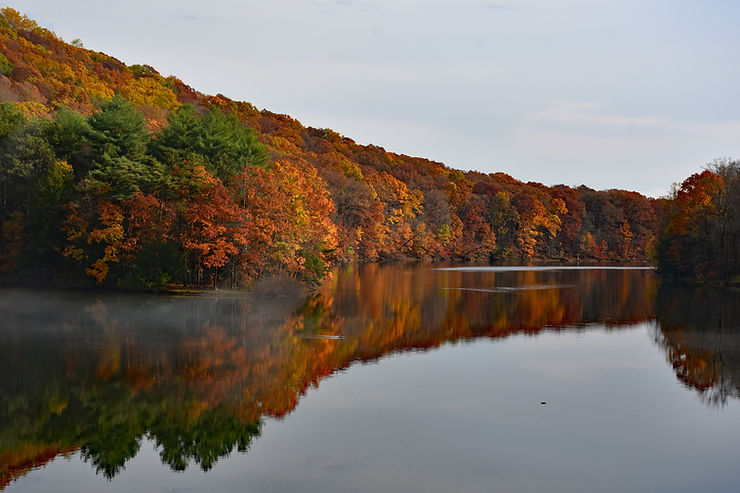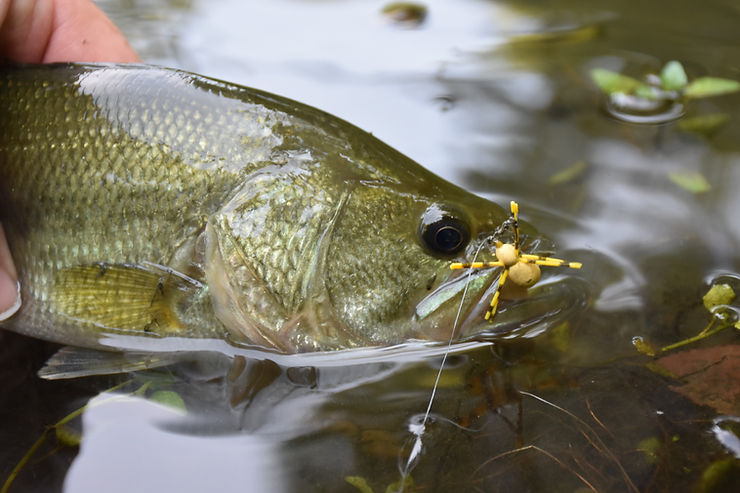Yellow Creek Lake

Located in Indiana County, Yellow Creek Lake encompasses the historic Kittanning Path once used by the Delaware and Shawnee nations as well as early settlers. Created in 1969 with an earth and rock dam on Yellow Creek, the 720-acre lake has become a popular destination for fishermen in search of musky, northern pike, crappies, catfish, and largemouth and smallmouth bass.
Approximately 230,000 anglers visit Yellow Creek Lake every year.
“The lake is a quality warmwater fishery,” says James Tweardy, Park Manager at Yellow Creek State Park and avid fisherman. “It’s a great bass fishing lake, but as the season wears on and it gets hotter, the lake gets a lot of pressure and fish can get shy. Typically, you won’t catch large numbers from this lake. However, the bass you catch will usually be bigger.”
Generally speaking, the most consistent time of year to fish is in the spring during pre-spawn conditions. As the season wears on and water temperatures warm, many of the bass move deeper during the day and return to the shallows once evenings start to cool. During hot summer stretches, night fishing will often produce the best results.
“We also have a lot of pike in this lake and fishing can be good in the shallows all spring and summer,” says Tweardy. “They average around 24 inches, but they’re a really healthy, chunky pike. A big pike from here would be 30 inches, although I know there are bigger ones.”
Yellow Creek Lake is home to muskies, too, and receives fingerling stockings of walleyes and other species. A 2014 PF&BC survey of the lake produced muskies in the 42-49-inch range as well as walleyes up to 26 inches.
Yellow Creek Lake has been a part of the Big Bass Program since 1991, which means all bass species possessed must be at least 15 inches, with a daily limit of four during the regulated season. Largemouth bass are the dominant species and accounted for 86% of the bass netted in the 2014 survey. Smallmouth bass have declined in recent years, possibly due to the rapid expansion of largemouth bass, but are still present throughout the lake. Habitat and water depth play key roles in where each species can be found.
The channel that used to be Yellow Creek averages about 20 feet deep and closely parallels the northern shore, which tends to be rockier, making it prime smallmouth habitat. Areas near the dam, with similar structure and depths of up to 35 feet, are also smallmouth hotspots.
Toward the center of the lake, depths average about 15 feet. The lake gets shallower as you move toward the southern shore where you’ll find plenty of weedy coves more conducive to largemouth bass.

“If you’re new to the lake,” says Tweardy, “that’s where I’d recommend trying first. Use some kind of weedless lure or soft plastics and find places with heavy vegetation and thick mats of lily pads. Those areas are great for bass and panfish all season long.”
The Department of Conservation and Natural Resources (DCNR), in conjunction with PF&BC, is constantly working on fish habitat improvements as well as anti-erosion and access projects. As a result, shoreline fishing opportunities are constantly improving. Tweardy expects that a detailed map pinpointing the location of all of the habitat improvements will soon be available to the general public on the DCNR website. Paper maps are also available in the park office.
Yellow Creek Lake has a 20-horsepower limit on outboard motors. “You can still explore every bit of the lake even with that restriction,” says Tweardy, “but it’s nice to know that if you’re in a canoe or kayak you won’t have to worry about getting swamped by speedboats.”
There are two main boat lunches easily accessed by Route 259, one of which is accessible day or night, and one that is day-use only. Another boat launch on the north shore can be accessed via South Harmony Road off of Route 422. All three are ideal for any-sized boat. However, when using a canoe or kayak, Tweardy recommends the launch at Grampap’s Cove because it’s more remote and sheltered from the wind.

“Yellow Creek State Park is considered an Important Birding Area by the Audubon Society,” says Tweardy. “One reason is the quality habitat that surrounds the lake. Another reason is because the east-west orientation of the lake as it sits between Chestnut Ridge and Laurel Ridge means the wind is always blowing. That’s why we find good numbers of waterfowl and migratory birds here, but it also means the lake itself can get dangerous, especially for people in canoes or kayaks. Just be aware that there will almost always be wind on the water.”
If you’re planning a trip and would like to know the conditions ahead of time, visit Weather Underground (wunderground.com) and enter Penn Run, PA, into the location search. Then select Yellow Creek State Park-FOYC.ORG Station. This will give you real-time information regarding weather conditions on Yellow Creek Lake.
If lake conditions prove too rough, or perhaps you just need a break from hauling in all those lunker bass, check out one of the three stocked trout streams that feed the lake – Yellow Creek, Little Yellow Creek, and Laurel Run. There are also 18 miles of hiking and biking trails on the north and south shores throughout the park.
Sign up for the Dark Skies Fly Fishing e-newsletter
It's free, delivered to your inbox approximately three times each month. Your information is always kept private and used for the sole purpose of keeping you up to date on blog posts and specials in the online store.
Sign Up Now